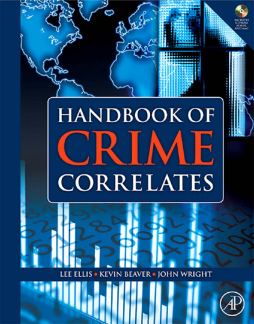
Additional Information
Book Details
Abstract
Over the past two centuries, many aspects of criminal behavior have been investigated. Finding this information and making sense of it all is difficult when many studies would appear to offer contradictory findings. The Handbook of Crime Correlates collects in one source the summary analysis of crime research worldwide. It provides over 400 tables that divide crime research into nine broad categories:
- Pervasiveness and intra-offending relationships
- Demographic factors
- Ecological and macroeconomic factors
- Family and peer factors
- Institutional factors
- Behavioral and personality factors
- Cognitive factors
- Biological factors
- Crime victimization and fear of crime
Within these broad categories, tables identify regions of the world and how separate variables are or are not positively or negatively associated with criminal behavior. Criminal behavior is broken down into separate offending categories of violent crime, property crime, drug offenses, sex offenses, delinquency, general and adult offenses, and recidivism. Accompanying each table is a description of what each table indicates in terms of the positive or negative association of specific variables with specific types of crime by region.
This book should serve as a valuable resource for criminal justice personnel and academics in the social and life sciences interested in criminal behavior.
"If you teach security management courses, criminal justice, or criminology classes this title will prove a useful and fact-filled book for you. The text doesn’t use statistics to explain away crime, it simply gives readers and researchers who are trying to verify certain factors a place to start. A major benefit to dedicated users of this text is the inclusion of a companion CD. This makes it easier to search, review, and print out the stats and tables."--Security Management (Septermber 2010)
